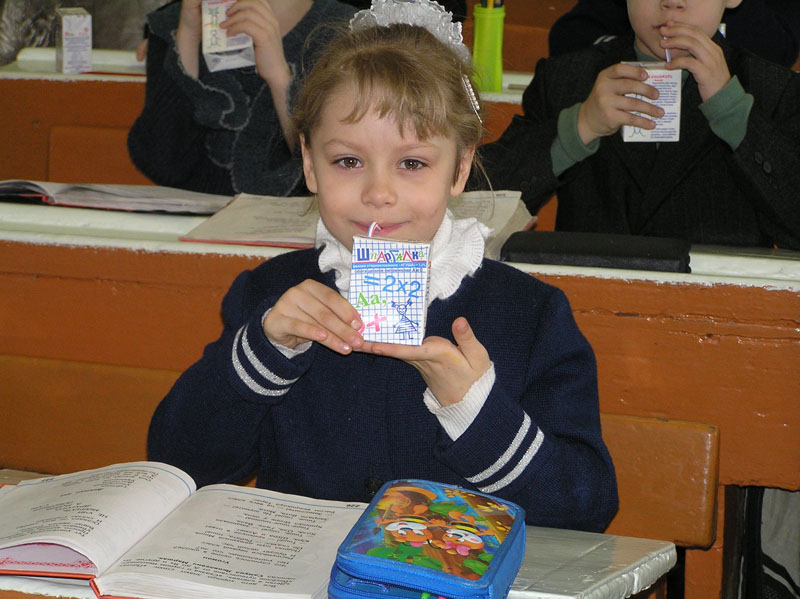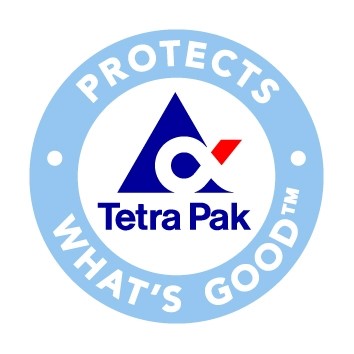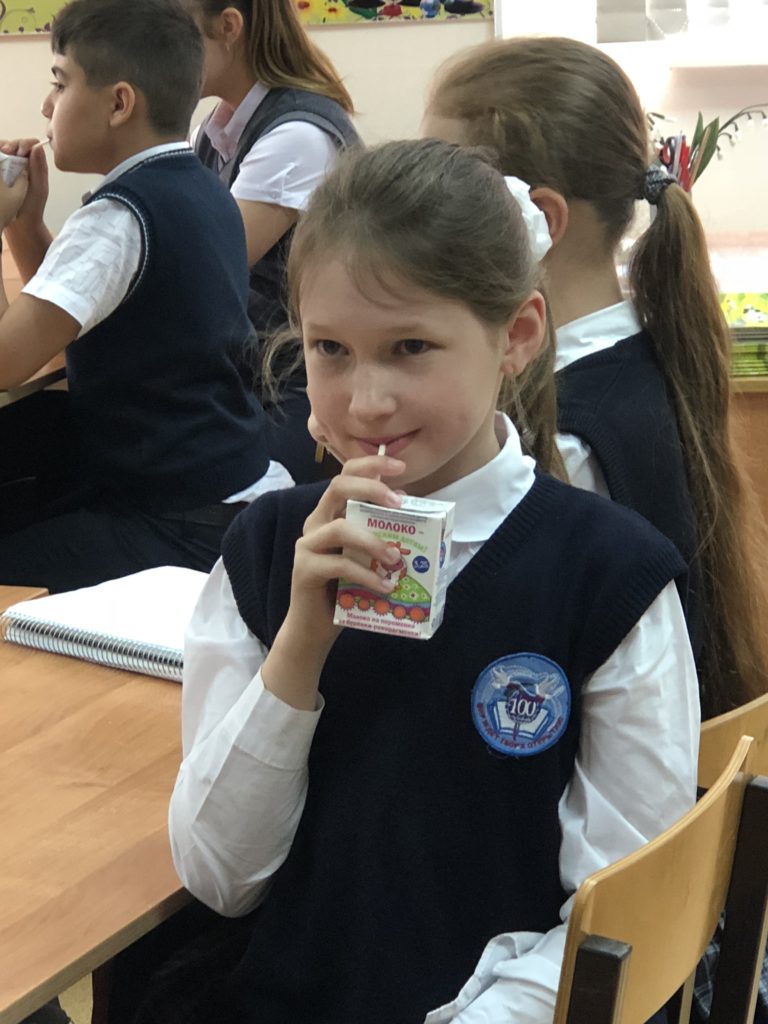Share this page
Enhancing child health in Russia through school milk
Promoting milk consumption and improving health in Russia


Location
Russia
Number of children
1.3 million
Age range
Grades 1-4
Timing
2005-present
Program overview
School milk was launched across the Russian Federation in 2005, with the aim of improving child health and promoting milk consumption. School milk now reaches 10% of Russian school children. In 2018, 1.3 million children in 18 of the 85 regions of Russia received school milk, with new regions added every year.
The Russian NGO “The Health of Our Children” promotes the benefits of school nutrition at federal and regional levels. The NGO conducts various types of events including Milk Day, lessons about benefits of milk, contests, and festivals.
Information is shared with stakeholders through the school milk web site www.schoolmilk.info, and more regions have introduced school milk as evidence is growing of the positive impacts it has on consumption and child health.
In 2019, the Republic of Khakassia re-launched the program and ten other regions are considering starting new programs.
Type of products
50,000 tons of locally produced milk per year
Stakeholder engaged
Regional & municipal authorities, schools, milk producers & public organizations
Additional details
In Russia, milk and dairy products consumption level is decreasing. In 1989, the milk consumption level was 396 kg/capita/year. By 2016 it had decreased to 236 kg. Many children do not get the nutrition that they need. Calcium consumption is only half of the reference intake. Funding for school feeding is also a challenge and, in many cases, parents have to pay for school meals.
School milk was launched across the Russian Federation in 2005, with the aim of improving child health and promoting milk consumption. School milk now reaches 10% of Russian school children. Most regions supply grades 1-4 but some also supply to children in the higher grades. Milk is always provided free of charge, funded by regional or municipal budgets.
The school milk model with UHT milk guarantees food safety and allows efficient distribution without the need for refrigeration. Efforts have been made to promote sustainability of the program by adopting legislation that would make school milk compulsory for all regions.


Organization
Regional & municipal authorities, schools, milk producers & public organizations - supported by Tetra Pak


Monitoring criteria
Many regions have evaluated the impact of school milk on consumption and child health. It has been shown that regions with school milk have higher consumption rates than the average for Russia. Official milk consumption statistics from Rosstat were compiled by the NGO “The Health of Our Children”. The data shows that the five school milk regions with the highest per capita milk consumption exceeded the Russian national average with levels ranging from 9-24%, respectively. In Udmurtia, the region with the largest school milk program, the per capita milk consumption was 13% higher than the national average. In Leningrad region, milk consumption per capita was 24% higher than the national average.
School milk also contributes to better child health. In Voronezh region, the cases of diseases of the endocrine system and nutritional and metabolic disorders declined by 29% in the period 2011-2013. Research conducted at the Voronezh State Medical University in 2016, showed that children receiving hot meals and school milk have a better height index and suffer less from chronic conditions.
In Leningrad region, the number of systemic diseases among children in the school milk program decreased by 11% between 2005 and 2015. In Udmurtia region, the number of healthy children increased by 4.5% in 2006-2012.




Dietary guidelines
Not presently available. The Agriculture Committee of the State Duma has proposed amendments in the education law meaning that all regions should provide its children with milk in school. A federal "Child Nutrition Act" was introduced 2019 and a new "Social Catering Act" includes standards for school food and nutrition.
See the World Health Organization (WHO) Global database on the Implementation of Nutrition Action (GINA) - Mechanisms in Russian Federation.
Further links
- School milk info website (In Russian)
- Further information on the development and implementation of this program is available on the Tetra Pak website






